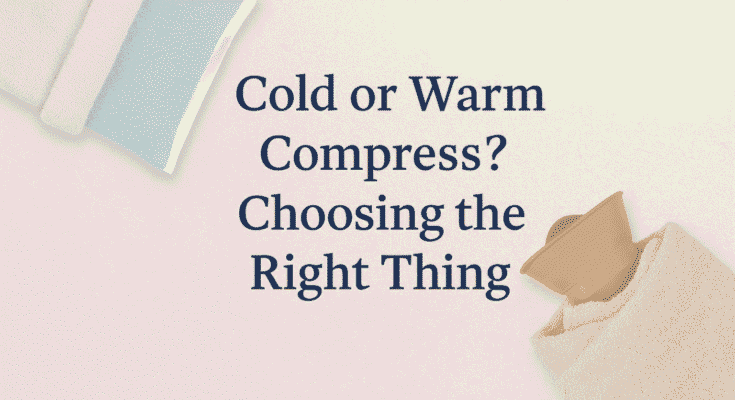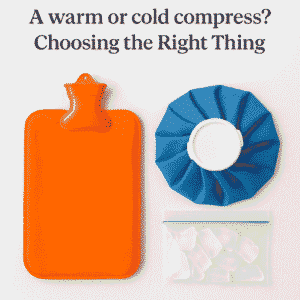Are you having trouble with headaches that won’t go away?
Headaches can make you very tired. They get in the way of your work, make it hard to sleep, and make it hard to concentrate on even the simplest tasks. If you often reach for painkillers, you might be wondering if there is a natural way to feel better.
The good news is that there are many people who trust using a cold or warm compress for headaches as a simple, drug-free way to feel better. But there is still an important question:
which one is better, cold or warm?
Let’s look at both options, figure out when to use each one, and see what really works based on science, expert advice, and relief.
Learning about the Naturalda Approach to Getting Rid of Headaches
Before taking medicine, you might want to try this old-fashioned method: putting a cold or warm compress on specific areas of your head or neck. This kind of heat and cold therapy is safe, cheap, and works for many kinds of headaches.
You need to treat different kinds of headaches in different ways. The type of compress you use can make a big difference if you have a migraine, a tension headache, or pain in your sinuses.
When Cold Compresses Help Headaches the Most
When your headache is sharp, throbbing, or really bad, a cold compress is usually the best thing to do. This is especially true for migraine attacks or headaches caused by heat or exercise.
Cold compresses are good for:
Migraine headaches that make you feel sick or sensitive to light
Pain that gets worse when you move
Headaches brought on by heat, exercise, or changes in hormones
Puffiness or redness around the temples or eyes
Why Cold Therapy Works: When it’s cold, blood vessels get smaller, which slows down blood flow and lowers pressure in the head. It also numbs the area a little, which makes it feel better and lessens the pain. A lot of people say that using ice packs or cold towels helps their headaches go away quickly.
How to Use a Cold Compress:(Cold or warm compress for headaches)
Put some ice cubes or a cold gel pack in a clean, soft towel. Put it on your forehead, the back of your neck, or over your eyes. Leave it on for 15 to 20 minutes. Take short breaks before applying again, and never put ice directly on your skin because it could irritate or hurt it.
When Warm Compresses Work Best
If your headache feels more like a tight band around your head or is caused by stress or muscle tension, a warm compress is usually the better choice.
When to Use Warm Compresses:
Tension headaches caused by stiff neck or shoulders
Headaches caused by stress
Headaches that happen because of bad posture or too much time in front of a screen
Sinus headaches that cause pressure or congestion in the face
Why Warm Therapy Works:
Warmth makes blood flow better and relaxes tight muscles. It’s especially helpful when the pain is caused by tightness in the neck, upper back, or temples. Heat can also help you relax, which can help with stress, which is a common cause of many kinds of headaches.
How to Use a Warm Compress:
Soak a towel in warm (not hot) water, wring it out, and gently place it on the area that hurts, such as the forehead, neck, or shoulders. You can also use a warm water bottle wrapped in cloth or a heating pad. Sit or lie down comfortably and leave it on for 15 to 20 minutes.
A warm or cold compress? Choosing the Right Thing
Don’t know which one to use?
The answer usually depends on what kind of headache you have. This is a simple comparison to help you make your choice:
Type of Headache: Suggested Compress
Migraine Cold Compress Tension Warm Compress for Headache
Sinus Warm compress for pressure on the head; Cold Compress (for swelling)
Headache from Getting Too Hot/Cold Pack
Warm Compress for Stress or Eye Strain
This comparison makes it clear that using cold compresses to ease migraines and warm compresses to ease tension headaches are not just popular tips; they are backed up by both science and patient experience.
What doctors and researchers say to do
Experts in health all agree that temperature-based therapy is good. The American Migraine Foundation says that cold compresses can make migraines less painful by slowing down nerve signals and lowering blood flow to the head. Warm compresses are also known to help relax muscles, which makes them great for stress headaches.
This simple method, which doesn’t require any medicine, is often the first step in home remedies for head pain that are supported by both Eastern and Western traditions.
For example, Ayurvedic practices use warm compresses for Vata-type headaches and cooling remedies for Pitta-type imbalances, like inflammation.
Can You Use Both Compresses Together?
Yes. Some people do better when they use both methods together. If you have a tension headache that turns into a migraine, you could start with a warm compress to relax your muscles and then switch to a cold compress to reduce swelling and pain.
This method also works for sinus headaches. You start with heat to open up the sinuses and end with cold to reduce swelling.
Things to Look for When Choosing Your Cure
Most of the time, your body tells you what it needs. Here’s a quick guide:
Headache Feels Like… Give This a Try
The pain is intense and pulsating, inducing a sense of nausea. Cold Pack
It feels dull and tight, like a band pressing on your head.
Feeling pressure around the eyes, cheeks, and nose Warm compress
Pain caused by loud noises or bright light Cold Pack
Headache after spending a lot of time in front of a screen Warm Compress
A Safe, Easy, and Natural Answer for Everyone
What do you like most about this method?
It is safe for kids, adults, and older people. You can try this method at home, at work, or on the road without any side effects or special equipment.
Keep this in mind:
Don’t use compresses for more than 20 minutes at a time.
Don’t put very hot or very cold things on your skin.
During treatment, always rest in a calm, quiet place.
In the end, a trusted remedy Supported by Nature and Knowledge
You don’t always need medicine to feel better. A cold or warm compress can help your body feel better if you’re stressed, tense, or have a bad migraine.
This method is more than just a home remedy; it’s a natural way to get rid of headaches that has been shown to work by science. You can ease your pain, feel better, and go back to living your life without any problems with a soft towel and some water.
Questions that are frequently asked
1. Is it better to use a cool or warm compress to treat headaches?
It depends on the type of headache you have. A cold compress is best used for migraines or severe discomfort. A warm compress is more effective for headaches caused by stress, tension, or sinus problems.
2. How long should I keep a compress on my head to relieve pain?
Use any compress for 15–20 minutes at a time. If necessary, take a brief pause before continuing. Avoid leaving it on for too long, and always check the temperature first.
3. Can I use both warm and cold compresses at the same time?
Yes, you can. Some people begin with a warm compress to relax tense muscles before progressing to a cold compress to reduce swelling or severe pain. This is particularly useful when transitioning from tension to migraine.
4. Is it safe to apply cold or heat directly to the skin?
No. Always use a towel or cloth to cover any ice or heating item. Touching it directly can irritate or even harm your skin.
5. Can children and the elderly use compresses to relieve headaches?
Yes, this technique is safe for people of all ages, including children and the elderly. Simply ensure sure the temperature is never too high or too low.






One Comment on “Cold vs. Warm Compress: Which Works Better for Headaches?”